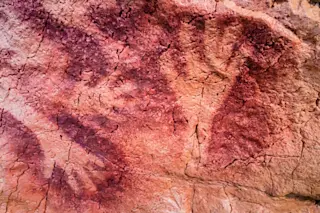The Prop M rover. via NASA
Before Curiosity took selfies and Opportunity rolled a marathon, rovers on Mars were more modest. Sojourner, NASA's first rover, was a microwave-sized robot designed to last just seven days, and more than two decades earlier the Soviet Prop M rovers were tiny little squat boxes that reached the Red Planet for a ski vacation.
Mars 2 and Mars 3 were twin missions launched to the Red Planet in 1971, May 19 and May 28 respectively. Both were landers designed such that petals protecting the payload would open after touchdown, exposing a suite of instruments to the Martian environment. Each also carried a tiny rover on board, the Prop M rovers.
The Prop Ms were tiny, weighing just 10 pounds on Earth so a little under 4 pounds in Mars' weaker gravity. It's body was a squat little box supported on skis, two flat board ...














